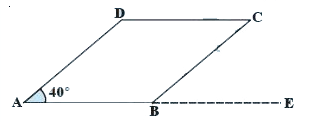←−→AB and←−→DC are two parallel lines and a transversal l, intersects ←−→AB at P and ←−→DC at R. Prove that the bisectors of the interior angles form a rectangle.Solution in Kannada
Step by step video & image solution for overset(harr)("AB ") and overset(harr)("DC ") are two parallel lines and a transversal l, intersects overset(harr)("AB ") at P and overset(harr)("DC ") at R. Prove that the bisectors of the interior angles form a rectangle. by Maths experts to help you in doubts & scoring excellent marks in Class 9 exams.
Updated on:21/07/2023Topper's Solved these Questions
- QUADRILATERALSBOOK - NCERT KANNADCHAPTER - QUADRILATERALSEXERCISE - THINK, DISCUSS AND WRITE
2 Videos
- QUADRILATERALSBOOK - NCERT KANNADCHAPTER - QUADRILATERALSEXERCISE - TRY THIS
1 Videos
- PROOFS IN MATHEMATICSBOOK - NCERT KANNADCHAPTER - PROOFS IN MATHEMATICSEXERCISE - EXERCISE - 15.4
15 Videos
- REAL NUMBERSBOOK - NCERT KANNADCHAPTER - REAL NUMBERSEXERCISE - EXERCISE - 1.4
37 Videos
Similar Questions
Show that the diagonals of a square are equal and bisect each other at right angles.
View SolutionExtend AB to E . Find ∠CBE. What do you notice. What kind of angles are ∠ABCand∠CBE ?

View SolutionState which of the following are mathematical statements and which are not? Give reason.
She has blue rays
View SolutionSimplify the following expressions.
(5+√7)(2+√5)
View SolutionD-Mannose HO−⇐=⇒D-GlucoseHO−⇐=⇒(A), Product (A) of above reaction is
View SolutionAB व CD दो समान्तर भुजाएँ है। तिर्यक रेखा l,AB व CD को क्रमशः X व Y पर प्रतिच्छेद करती है। सिद्ध कीजिए की आंतरिक कोण के समद्विभाजक एक आयत बनाते है।
View SolutionABCD is a parallelogram. Equations of ←→ABand ←→AD are 4x+5y=0,7x+2y=0 and the equation of the diagonal ←→BD is 11x+7y=9. Then the equation of ←→AC is
View SolutionIf points A- (1, -2, -1), B = (4,0, -3), C = (1,2, -1), D = (2, -4, -5) overset(harr)(AB), overset(harr)(CD) Find the minimum distance between the asymmetric lines.
View SolutionIf A overset(K_1) hArr B,B overset(K_2)hArr C,C overset(K_3) D What is the value of K_4 " in "A hArr D
View Solution←−→AB and←−→DC are two parallel lines and a transversal l, intersects ←−→AB at P and ←−→DC at R. Prove that the bisectors of the interior angles form a rectangle.
View Solution←−→AB and←−→DC are two parallel lines and a transversal l, intersects ←−→AB at P and ←−→DC at R. Prove that the bisectors of the interior angles form a rectangle.
View Solution←−→AB and←−→DC are two parallel lines and a transversal l, intersects ←−→AB at P and ←−→DC at R. Prove that the bisectors of the interior angles form a rectangle.
View Solutionনিজে আঁকার চেষ্টা করো - স্কেলের সাহায্যে ←→AB ও ←→CD দুটি সমান্তরাল সরলরেখা আঁকার চেষ্টা করো।
View SolutionLabel the arrows marked A,B in the following:
a. Solid A⇐===⇒B liquid
b. Liquid A⇐===⇒B Gas
c.Solid A⇐===⇒B Gas
View SolutionEquation of the sides ←→BC,←→CA,←→AB of a triangle ABC are Ur=arx+bry+cr=0,r=1,2,3 respectively then equation of line parallel to ←→BC and passing through A is
View Solution
